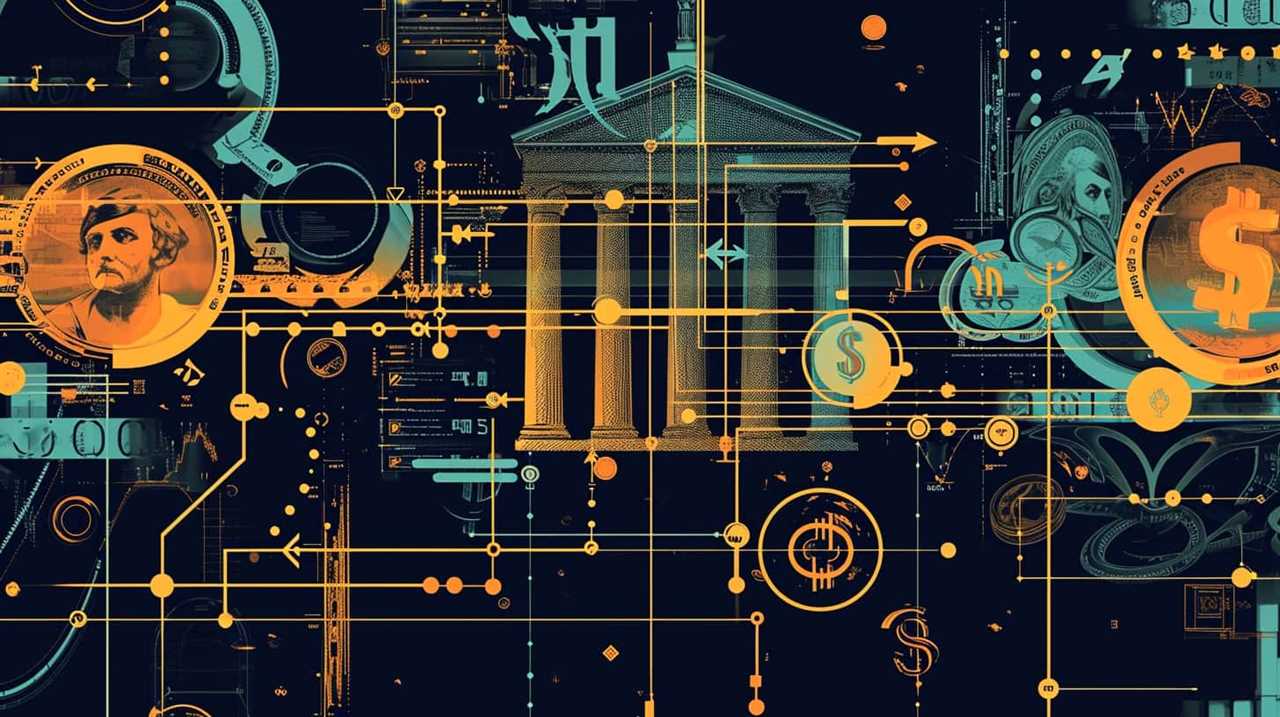In our pursuit of innovation, we are on a mission to explore the fascinating discoveries of Daniel Kahneman’s research on cognitive biases.
These captivating concepts shed light on the intricate workings of our minds and how they shape our decision-making processes.
By delving into the depths of confirmation bias, availability heuristic, anchoring bias, framing effect, loss aversion, halo effect, and sunk cost fallacy, we uncover the hidden forces that influence our choices.
As we unravel the role of cognitive biases in the realm of behavioral economics, we gain a deeper understanding of the human psyche and the potential for transformative innovation.

Join us on this enlightening expedition as we unpack Kahneman’s profound insights, igniting a spark of creative thinking and paving the way for groundbreaking ideas.
Key Takeaways
- Cognitive biases are systematic patterns of deviation from rationality in thinking and decision-making processes.
- Confirmation bias causes individuals to seek and interpret information that confirms their pre-existing beliefs.
- The availability heuristic leads individuals to rely on easily accessible information to make judgments or decisions.
- Anchoring bias is the tendency to heavily rely on the first piece of information encountered.
Definition of Cognitive Biases
We will define cognitive biases as systematic patterns of deviation from rationality in our thinking and decision-making processes. Understanding cognitive biases is crucial in the context of decision making, as they can significantly impact the quality and accuracy of our choices.
These biases are inherent in human cognition and can influence our perception, judgment, and interpretation of information. Cognitive biases can arise from various factors, including our reliance on mental shortcuts, emotional influences, and social pressures. They can lead us to make errors in judgment, overlook relevant information, or make irrational decisions.
By understanding these biases, we can become more aware of our cognitive limitations and develop strategies to mitigate their effects. In the field of innovation, recognizing and addressing cognitive biases is particularly important. When creating new ideas or solutions, we need to challenge our assumptions, question our biases, and consider alternative perspectives. By doing so, we can foster a more open and creative environment conducive to innovation.

Transitioning to the subsequent section about confirmation bias in decision making, it’s important to delve deeper into one of the most prevalent and impactful cognitive biases that affect our decision-making processes.
Confirmation Bias in Decision Making
Confirmation bias is a cognitive bias that affects decision making by causing individuals to seek out and interpret information in a way that confirms their pre-existing beliefs or hypotheses.
Overcoming confirmation bias requires conscious effort and an open mind to consider alternative perspectives and evidence.
Failure to recognize and mitigate confirmation bias can have significant impacts on decision making, leading to flawed judgments, missed opportunities, and ineffective problem-solving.

Overcoming Confirmation Bias
To overcome confirmation bias in decision making, it’s crucial for us to actively challenge our preconceived notions and seek out diverse perspectives. Confirmation bias occurs when we actively search for, interpret, and remember information that confirms our existing beliefs, while ignoring or downplaying contradictory evidence. This bias can lead to flawed decision making and hinder innovation.
By consciously questioning our assumptions and exposing ourselves to a wide range of opinions and viewpoints, we can mitigate the impact of confirmation bias. Cognitive dissonance, the discomfort experienced when our beliefs are inconsistent with our actions, can be a powerful motivator for seeking out contradictory information. Additionally, managing information overload and practicing mindfulness can help us remain open-minded and receptive to new ideas.
Impacts of Biased Decisions
Biased decisions, particularly confirmation bias in decision making, can have significant impacts on our choices and outcomes. When we allow confirmation bias to influence our decision-making process, it can lead to several negative implications:
- Limited information processing: Confirmation bias narrows our focus to only seek out information that confirms our preexisting beliefs, causing us to overlook valuable and contradictory evidence.
- Missed opportunities: By disregarding opposing viewpoints, confirmation bias prevents us from considering alternative perspectives and potentially innovative solutions.
- Poor decision quality: Making decisions based on biased information can lead to suboptimal outcomes, as we may overlook important factors or fail to critically evaluate the available options.
- Reinforcement of biases: Confirmation bias can perpetuate and reinforce our existing beliefs, making it difficult to challenge and change our perspectives.
Understanding the consequences of cognitive biases is crucial for individuals and organizations seeking to promote innovation and make better decisions. By recognizing and mitigating confirmation bias, we can improve the quality of our choices and increase the likelihood of achieving desirable outcomes.

Availability Heuristic and Its Effects
One of the most prominent cognitive biases, the availability heuristic, greatly influences our decision-making process. This bias occurs when we rely on easily accessible information to make judgments or decisions, rather than considering the full range of available evidence. The availability heuristic can have a profound impact on our decision-making abilities, leading us to make judgments that may not be accurate or rational.
One of the effects of the availability heuristic is that it can lead to the overestimation or underestimation of the likelihood of an event occurring. For example, if we hear about a plane crash on the news, we may become more fearful of flying, even though statistically speaking, flying is much safer than driving. This bias can also be observed in everyday life when we make decisions based on recent and vivid examples, rather than considering the full scope of relevant information.
The availability heuristic can also influence our perceptions of risk and uncertainty. When we’re exposed to information that’s readily available, such as news stories or personal anecdotes, we may assign a higher level of risk or probability to certain events. This can impact our decision-making process and lead us to make choices that aren’t necessarily based on accurate assessments of risk.
In conclusion, the availability heuristic is a cognitive bias that can have significant effects on our decision-making process. By relying on easily accessible information, we may overlook important evidence or make judgments that aren’t based on accurate assessments of risk. Understanding and recognizing the influence of this bias is crucial for making more informed and rational decisions.

Moving on to the subsequent section, let’s explore the anchoring bias and its influence on our decision-making process.
Anchoring Bias and Its Influence
Continuing from our examination of the availability heuristic, let’s now delve into the influence of the anchoring bias on our decision-making process. Anchoring bias refers to the tendency to rely heavily on the first piece of information encountered when making judgments or decisions. This cognitive bias can have a significant impact on our choices and perceptions.
To better understand the influence of anchoring bias, consider the following:
- Anchoring in negotiations: When negotiating, the initial offer or proposal can anchor our perception of what’s reasonable, leading us to make concessions or accept terms that may not be in our best interest.
- Anchoring in price judgments: The initial price we encounter can serve as an anchor, influencing our perception of value. This bias can lead us to overpay for products or services.
- Anchoring in estimating quantities: The initial quantity we encounter can anchor our estimates, causing us to underestimate or overestimate subsequent quantities.
- Anchoring in decision-making: The initial information we receive can anchor our decisions, leading us to overlook or undervalue other relevant information.
To mitigate the influence of anchoring bias, it’s important to be aware of its existence and employ strategies such as:

- Seeking alternative perspectives or information.
- Deliberately questioning and reevaluating initial judgments or estimates.
- Using external benchmarks or objective standards to evaluate options.
- Engaging in deliberate and systematic decision-making processes.
Understanding the influence of anchoring bias and employing these strategies can help us make more informed and rational decisions.
Transitioning into the subsequent section about the framing effect on perception and choices, let’s explore how the way information is presented can impact our decision-making process.
Framing Effect on Perception and Choices
Let’s now explore the impact of the framing effect on our perception and choices. The framing effect refers to the way in which information is presented or "framed" can significantly influence decision making, perception, and choices. This cognitive bias highlights the fact that people tend to react differently to the same information depending on how it is presented to them.
To illustrate the framing effect, let’s consider the following table:

| Frame 1 | Frame 2 |
|---|---|
| Positive | Negative |
| Gain | Loss |
| Success | Failure |
| Winning | Losing |
In this table, we can see that the same concept is framed in a positive or negative manner. For example, gaining money is framed positively, while losing money is framed negatively. Research has shown that individuals are more risk-averse when faced with a potential loss, and more risk-seeking when faced with a potential gain. This means that the way information is framed can influence how individuals perceive risks and make decisions.
Understanding the framing effect on decision making, perception, and choices is crucial in various fields, including marketing, public policy, and negotiation. By carefully framing information, organizations and individuals can influence the way their audience perceives and reacts to it. This knowledge can be leveraged to shape behaviors, encourage certain choices, and drive innovation.
Overconfidence Bias in Predictions
When it comes to making predictions, humans have a tendency to be overconfident in their abilities. This bias leads us to overestimate our chances of future success while simultaneously ignoring potential risks and obstacles.
Research has shown that this overconfidence bias can have significant consequences, leading to poor decision-making and increased vulnerability to financial, professional, and personal setbacks.

Overestimating Future Success
We often fall victim to the overconfidence bias in our predictions, leading us to overestimate our future success. This cognitive bias stems from our tendency to overestimate our abilities and have unrealistic expectations about our performance.
Here are four key points to consider:
- Optimism bias: We’ve a natural inclination to see the future in a positive light, which leads us to believe that we’ll be more successful than we actually end up being.
- Confirmation bias: We seek out information that confirms our beliefs and ignore or downplay evidence that contradicts our optimistic predictions.
- Illusion of control: We’ve a tendency to believe that we’ve more control over outcomes than we actually do, leading us to overestimate our ability to achieve desired results.
- Planning fallacy: We often underestimate the time, effort, and resources required to complete a task, leading to unrealistic expectations of future success.
Ignoring Potential Risks
The article explores the cognitive bias of overconfidence in predictions, specifically focusing on the tendency to ignore potential risks. This bias, known as the overconfidence bias, refers to the tendency to have excessive confidence in one’s own predictions or abilities, leading to an underestimation of potential dangers.
Research has shown that individuals who exhibit this bias often fail to adequately assess the risks associated with their actions or decisions. This can have significant consequences, particularly in domains where risk assessment is crucial, such as finance, healthcare, and engineering.

Loss Aversion and Risky Decision Making
Loss aversion and risky decision making are inherent cognitive biases that influence our behavior and choices. These biases can have a significant impact on how we approach and evaluate potential risks, ultimately affecting the decisions we make. When it comes to risk aversion, individuals tend to have a strong preference for avoiding losses rather than achieving gains. This bias can lead to a reluctance to take risks, even when the potential rewards may outweigh the potential losses.
Here are four key insights into loss aversion and its influence on risky decision making:
- Framing effects: The way information is presented can significantly impact how individuals perceive and evaluate risks. Loss aversion means that individuals are more sensitive to potential losses than potential gains, which can lead to different risk assessments depending on how the information is framed.
- Prospect theory: Developed by Kahneman and Tversky, this theory suggests that individuals evaluate potential outcomes based on gains and losses from a reference point, rather than in absolute terms. This reference point can greatly influence risk aversion and decision making.
- Endowment effect: Loss aversion is closely tied to the endowment effect, which is the tendency for individuals to value something more highly when they own it. This bias can make individuals less willing to take risks with their possessions, as the potential loss feels more significant.
- Regret aversion: Loss aversion is also linked to regret aversion, where individuals make decisions based on avoiding potential regret rather than maximizing potential gains. This bias can lead to risk-averse behavior, as individuals prioritize avoiding the regret of making a wrong decision over the potential benefits of taking a risk.
Understanding loss aversion and its impact on risky decision making can help individuals and organizations make more informed choices. By recognizing and mitigating these biases, we can strive for innovation and growth while managing potential risks effectively.
Halo Effect and Its Impact on Judgments
The Halo Effect can significantly influence our judgments and perceptions. This cognitive bias refers to the tendency to let our overall impression of a person, brand, or product influence our judgment of specific attributes or qualities. It plays a crucial role in shaping our first impressions and can impact our decision-making process in various contexts, including marketing strategies.

When it comes to first impressions, the Halo Effect can be particularly powerful. Research has shown that a positive initial impression can lead us to overlook or downplay negative traits or flaws in individuals or products. For example, if we perceive someone to be physically attractive, we may assume they possess other positive qualities such as intelligence or kindness.
In marketing, the Halo Effect can be strategically leveraged to shape consumer perceptions and preferences. Companies often employ celebrity endorsements or attractive models to create a positive association with their products. By associating their brand with desirable qualities, they aim to influence consumer decision-making and increase sales.
Understanding the Halo Effect is crucial for marketers and individuals alike. By being aware of this bias, we can make more informed judgments and avoid falling into the trap of relying solely on first impressions.
Now, let’s delve into another cognitive bias that affects our decision-making process: the sunk cost fallacy and its impact on rationality.

Sunk Cost Fallacy and Rationality
Continuing from the previous subtopic on the Halo Effect, let’s now explore the impact of the sunk cost fallacy on our rational decision-making.
The sunk cost fallacy refers to our tendency to continue investing time, money, or effort into something simply because we’ve already invested in it, even if it no longer makes logical sense. This cognitive bias can have significant implications for our economic behavior and decision-making processes.
- The sunk cost fallacy can lead us to make irrational decisions, as we prioritize past investments over future outcomes.
- It can prevent us from cutting our losses and moving on to more productive ventures.
- The fallacy can also result in a distorted perception of value, as we overvalue things that we’ve already invested in.
- Furthermore, the sunk cost fallacy can perpetuate a cycle of poor decision-making, as we feel compelled to keep investing in failing projects.
Understanding and overcoming the sunk cost fallacy is crucial for making rational decisions in our personal and professional lives. By recognizing this bias, we can avoid being trapped by past investments and instead focus on the potential benefits and costs of future actions.
Now, let’s delve further into the role of cognitive biases in behavioral economics.
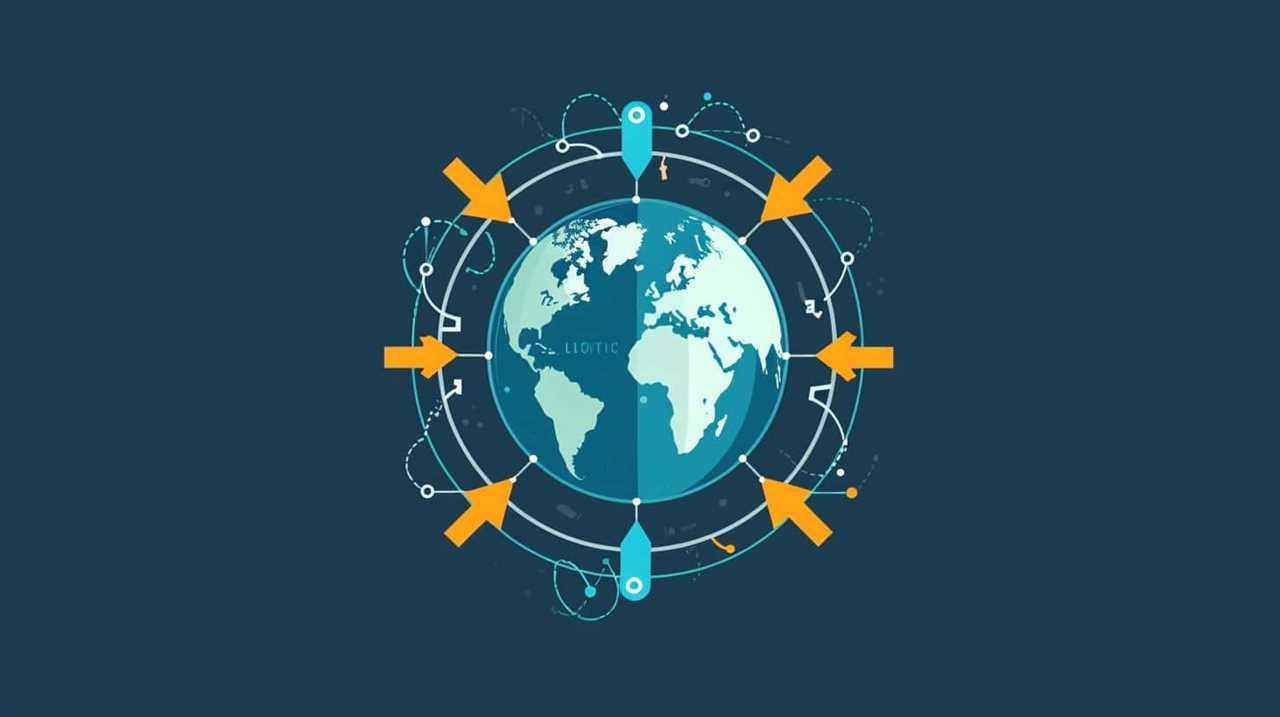
The Role of Cognitive Biases in Behavioral Economics
When examining the role of cognitive biases in behavioral economics, it’s crucial to consider their impact on decision-making and their influence on market behavior.
Cognitive biases can significantly affect the way individuals make choices, leading to suboptimal decisions and irrational behavior. These biases can distort perception, judgment, and decision-making processes, ultimately shaping economic outcomes and market dynamics.
Understanding the role of cognitive biases is essential for developing effective strategies and interventions to mitigate their negative effects and promote rational decision-making in economic contexts.
Impact on Decision-Making
Cognitive biases play a significant role in shaping our decision-making processes in the field of behavioral economics. These biases, such as the overconfidence bias, can lead us to make irrational and suboptimal choices. Understanding the impact of cognitive biases on decision-making is crucial for developing effective strategies to mitigate their negative effects.

- Overconfidence bias: This bias causes individuals to have an inflated sense of their own abilities and knowledge, leading to overestimation of the accuracy of their judgments and decisions.
- Anchoring bias: This bias occurs when individuals rely too heavily on the first piece of information they encounter, influencing subsequent judgments and decisions.
- Confirmation bias: This bias leads individuals to seek out information that confirms their existing beliefs, while ignoring or downplaying contradictory evidence.
- Availability bias: This bias occurs when individuals rely on readily available information, such as recent or vivid examples, to make judgments and decisions, instead of considering the full range of relevant information.
Influence on Market Behavior
Our understanding of the influence of cognitive biases on market behavior in behavioral economics is deepened by exploring Kahneman’s insights.
Cognitive biases have a significant impact on investment choices and consumer behavior. When making investment decisions, individuals often rely on heuristics, or mental shortcuts, which can lead to biased judgments and suboptimal outcomes.
For example, the availability bias may cause investors to overweight recent information and ignore long-term trends. Additionally, the anchoring bias can lead investors to anchor their decisions on irrelevant information, such as the initial price of a stock.
These biases can distort market behavior, leading to asset mispricing and market inefficiencies. Understanding and mitigating these biases is crucial for investors and policymakers to make informed decisions and improve market outcomes.
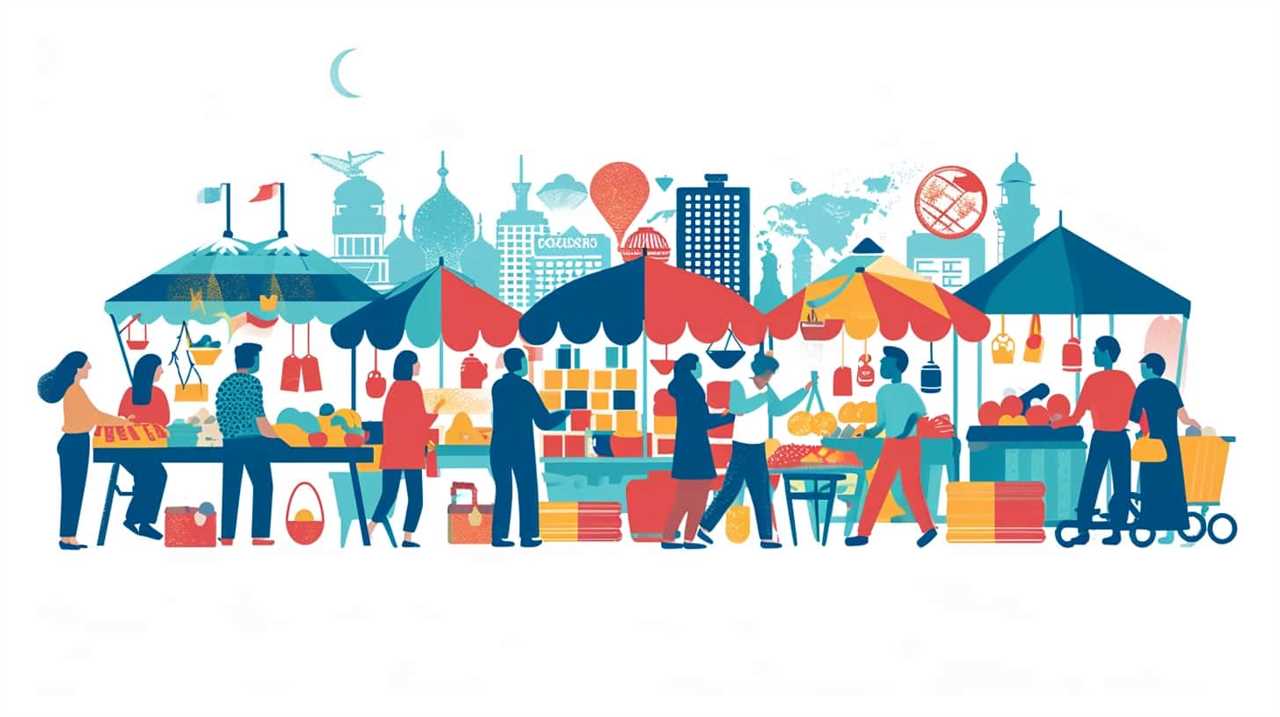
Frequently Asked Questions
What Are Some Real-Life Examples of Confirmation Bias in Decision Making?
In real life decision making, confirmation bias can be seen when we seek out information that confirms our pre-existing beliefs and ignore evidence that contradicts them. Emotions also play a role in decision making by influencing our perception and judgment.
How Does the Availability Heuristic Affect Our Everyday Choices?
The availability heuristic, a mental shortcut, greatly shapes our everyday choices. It influences consumer behavior, as we tend to rely on easily accessible information. Additionally, it impacts financial decision making, leading to biased judgments based on readily available data.
Can You Provide an Example of the Anchoring Bias and How It Influences Decision Making?
Anchoring bias occurs when we rely too heavily on the first piece of information we encounter. For example, when buying a car, we may be overly influenced by the initial price offered, even if it’s negotiable. Confirmation bias can then reinforce this decision.
How Does the Framing Effect Impact Our Perception and Decision Making?
The framing effect’s influence on decision making is significant. Our perception is shaped by how information is presented, leading to biased judgments and choices. Understanding cognitive biases like this is crucial for innovation and effective decision-making.
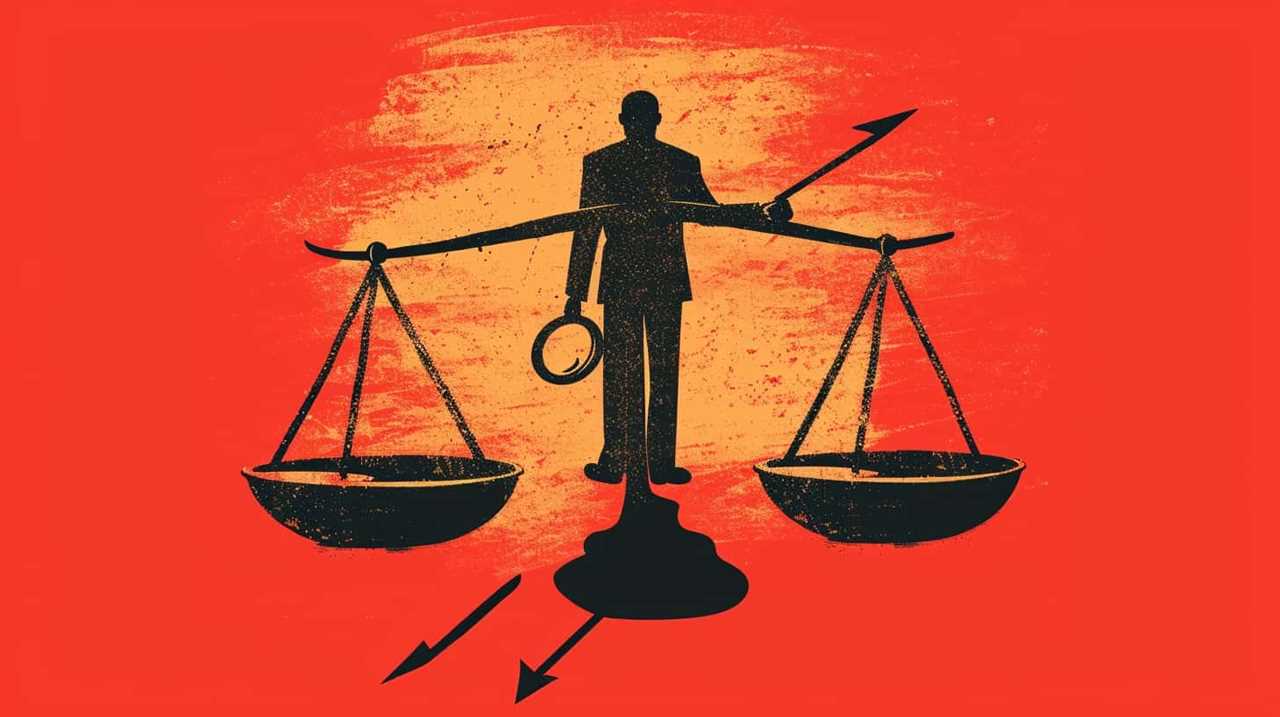
What Are Some Common Situations Where Overconfidence Bias Can Lead to Poor Predictions or Decision Making?
In situations where overconfidence bias is present, we often make poor predictions or decisions due to an inflated sense of our own abilities. These consequences can lead to missed opportunities and costly mistakes.
Conclusion
In conclusion, cognitive biases are deeply ingrained in our decision-making processes and can greatly impact the outcomes of our choices. They act as hidden forces, subtly shaping our perceptions and judgments.
Like a powerful undertow, these biases can pull us away from rationality and towards irrationality. It’s crucial to be aware of these biases and actively work to overcome them in order to make more informed and balanced decisions.
Ignoring them is like sailing blindly into treacherous waters, risking being swept away by the currents of our own biases.
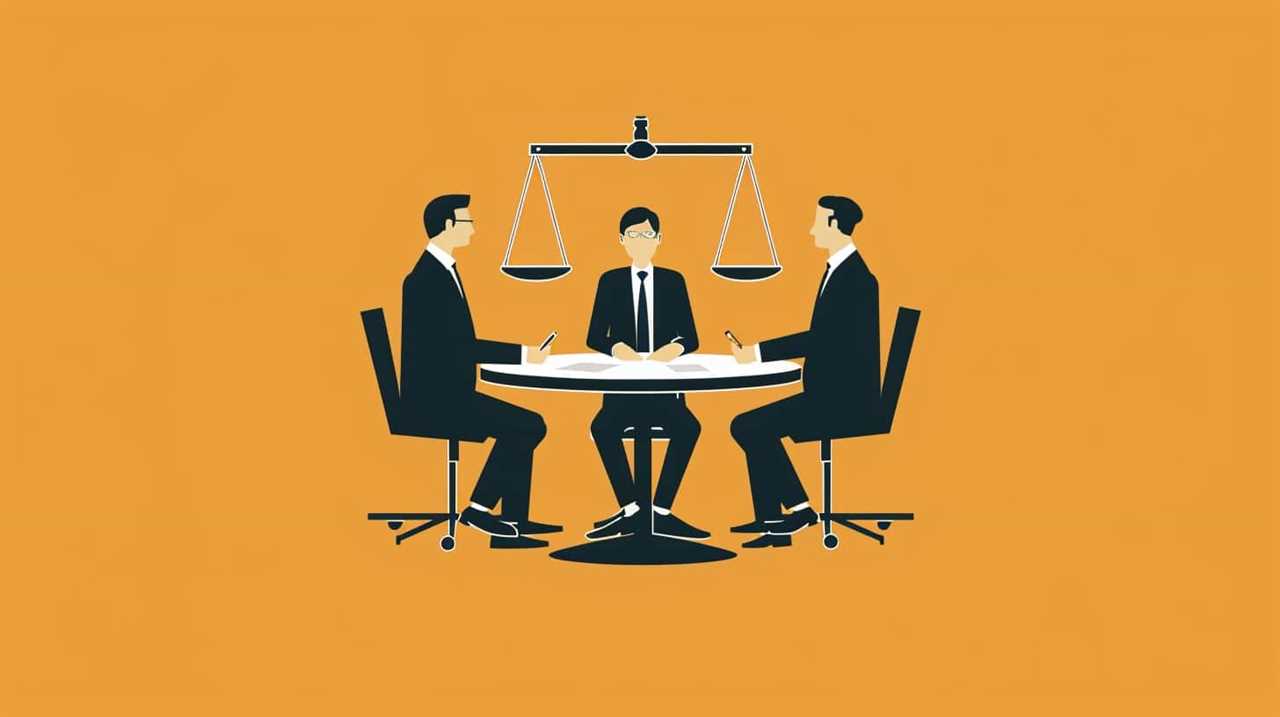
Lauren’s talent in writing is matched by her passion for storytelling. Her love for books and deep understanding of culture and entertainment add a distinct flavor to her work. As our media and press contact, Lauren skillfully bridges the gap between afterQuotes and the broader media landscape, bringing our message to a wider audience.



